1. Frankfurter Crown Roast
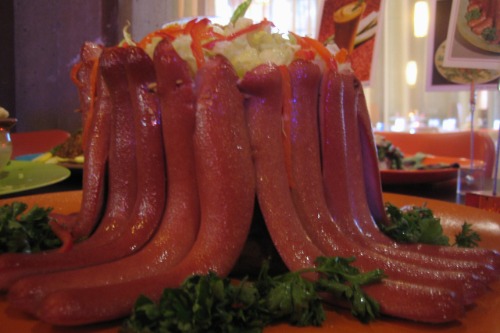
Hot dogs were inexpensive and versatile, so why not dress them up? This dish involved arranging them upright in a circle to resemble a roast, often stuffed with sauerkraut or mashed potatoes. It was creative—but undeniably strange.
2. Spam and Pineapple

Spam was introduced during WWII and became a pantry staple afterward. In an effort to “glam it up,” recipes combined the canned meat with sweet pineapple rings. It was kitschy, yes, but it also reflected the growing obsession with Hawaiian-inspired flavors.
3. Ham and Bananas Hollandaise

Yes, this was a thing. The recipe involved wrapping bananas in slices of ham, covering them with hollandaise sauce, and baking them. It sounds like a dare, but the era’s love of experimenting with sweet and savory combinations may explain it.
4. Aspic Molds
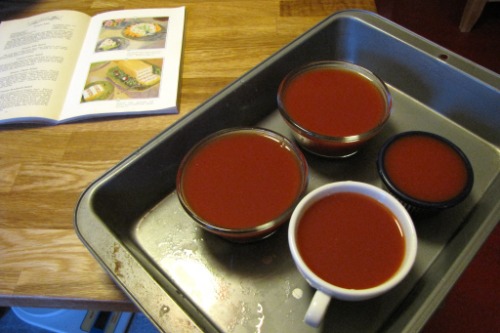
Like Jell-O, savory aspics—gelatin made with broth—were all the rage. Encasing vegetables, seafood, or even hard-boiled eggs in a shimmering mold seemed fancy and modern. It was also a way to stretch leftovers into something “special.”
5. Tuna Noodle Casserole
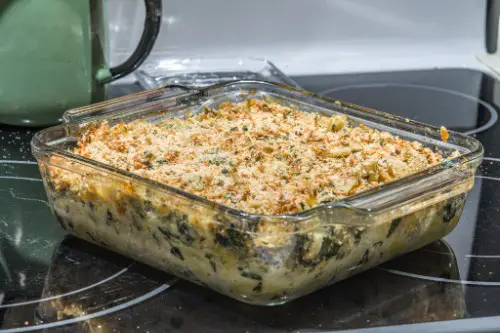
Canned tuna, cream of mushroom soup, and noodles created this budget-friendly dish. While practical, its lack of texture and beige appearance didn’t scream appetizing. Yet it thrived as a go-to meal for busy moms looking to fill bellies without emptying wallets.
6. Hot Dr. Pepper
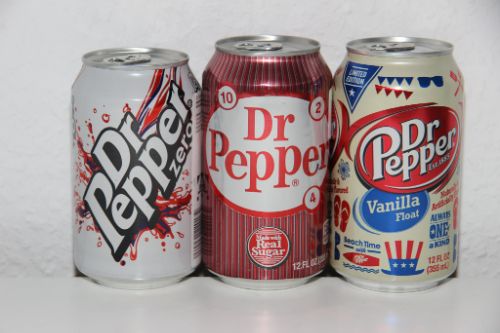
Soda wasn’t just for sipping cold—at least not in the ‘50s. People were encouraged to heat up Dr. Pepper and serve it with a lemon slice as a winter treat. It was marketed as sophisticated and a comforting alternative to tea or coffee.
7. Liver Loaf
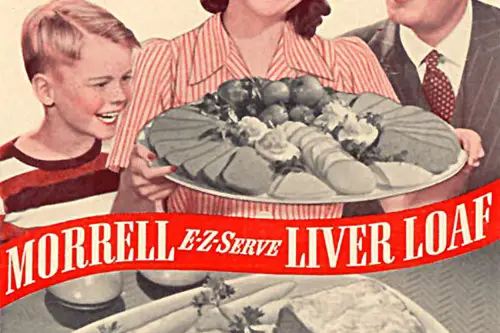
Liver was seen as a nutritious powerhouse, so turning it into a loaf—often with breadcrumbs, onions, and plenty of ketchup—made sense to home cooks looking for frugal meals. Unfortunately, no amount of ketchup could mask its distinctive taste.
8. Perfection Salad
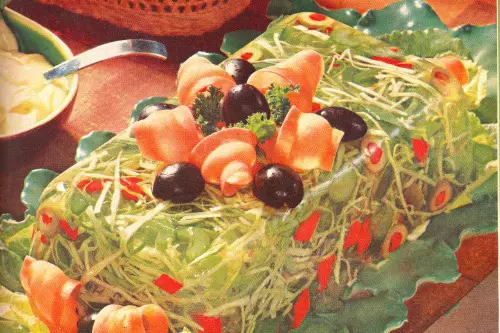
This salad combined gelatin, shredded cabbage, carrots, and pimentos into a wobbly, translucent mold. It was considered the pinnacle of elegance and practicality for parties, despite its dubious flavor profile.
9. Mock Apple Pie
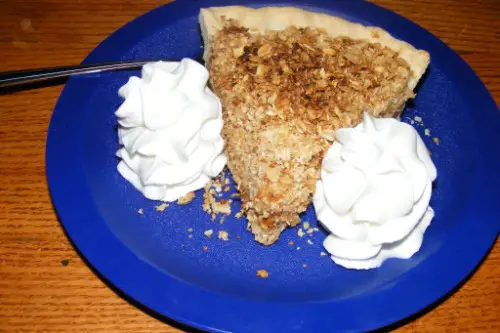
Made with Ritz crackers instead of apples, this pie was a holdover from wartime rationing, when fresh produce wasn’t always available. The crackers mimicked the texture of cooked apples surprisingly well, and plenty of sugar and cinnamon helped sell the illusion.
10. Deviled Ham Spread
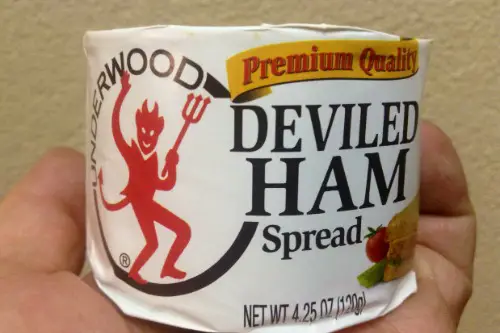
Canned deviled ham was pureed meat in a tin, ready to be slathered on crackers or bread. While it was convenient for quick snacks, its overly processed flavor and pasty texture made it an acquired taste.
11. Waldorf Gelatin Salad
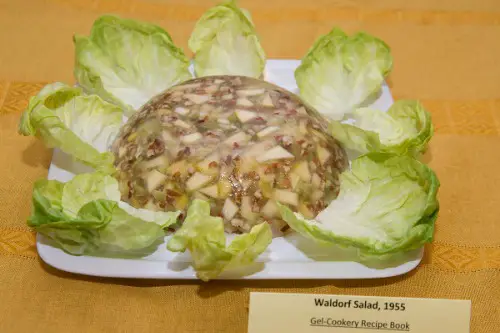
This twist on the classic Waldorf salad blended Jell-O with apples, celery, grapes, and walnuts. While the original was crisp and refreshing, this version leaned into the gelatin obsession and turned it into a quivering oddity.
12. Velveeta Fudge
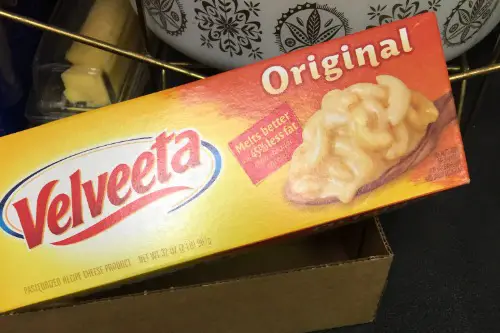
Processed cheese like Velveeta found its way into everything, even desserts. Recipes for Velveeta fudge combined the cheese with sugar and chocolate, claiming it created a creamy texture. While it worked, the idea of cheese in fudge remains divisive.
13. Jell-O Salads
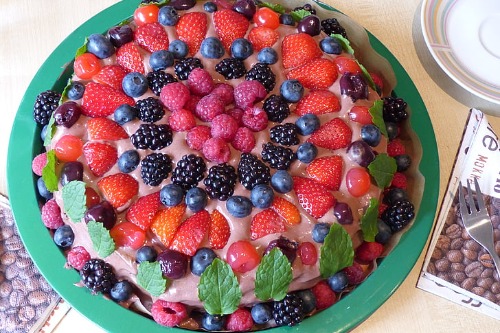
Jell-O was the king of postwar kitchens, but its reign was bizarre. Housewives used it as a canvas for everything from shredded carrots to olives and tuna. Why? It was cheap, colorful, and a symbol of domestic ingenuity. Plus, companies marketed it as a sophisticated dish.
14. Meatloaf with a Surprise Center

This meatloaf variation had a hard-boiled egg baked right in the middle. The concept of cutting into a slice and finding a bright yellow-and-white “surprise” made it a novelty item at dinner parties.
The postwar kitchen was a reflection of its time: frugality mixed with a fascination for convenience and novelty. While some of these dishes might make us cringe today, they remind us of a period when food innovation and optimism were served in equal measure.


